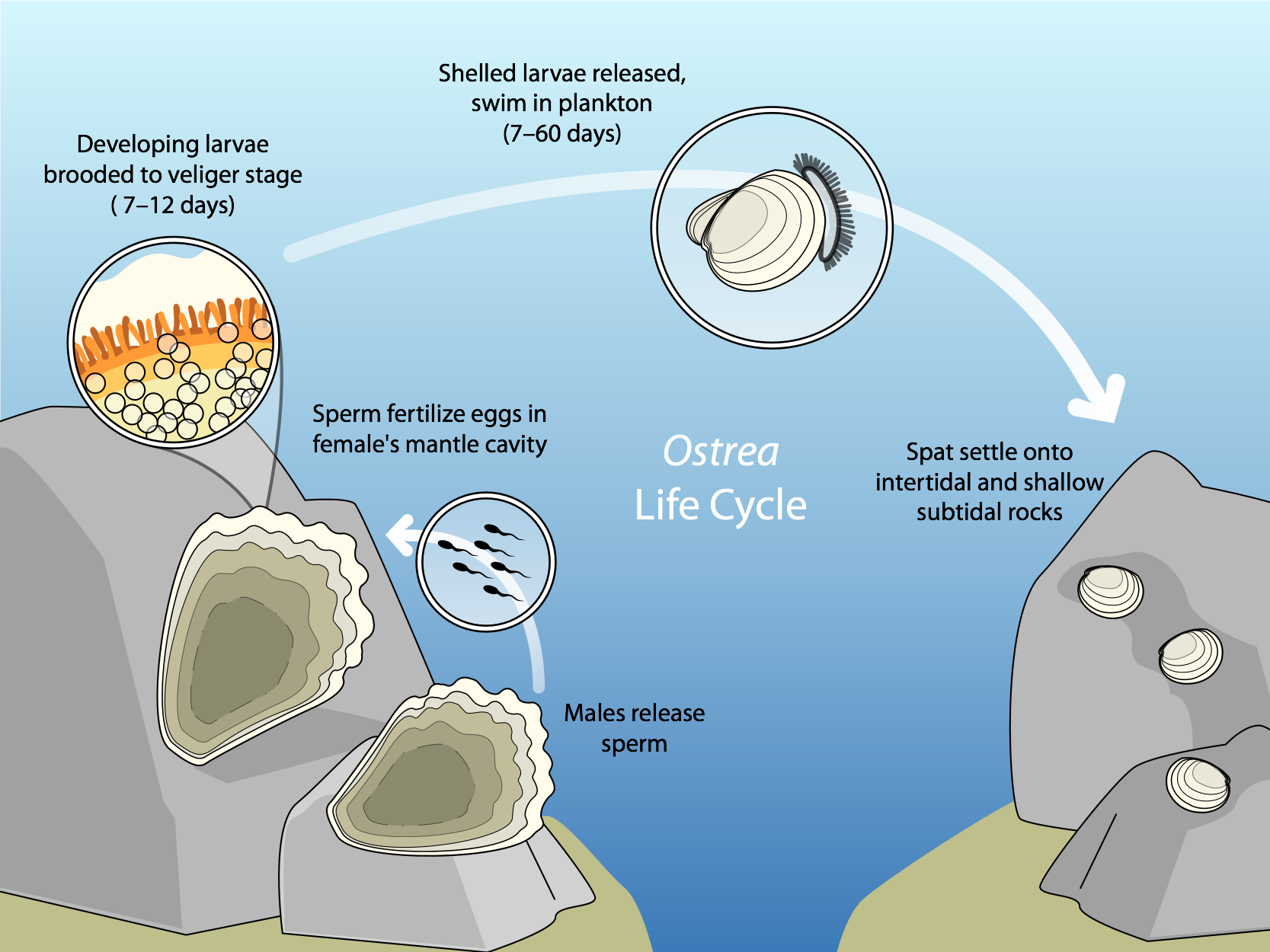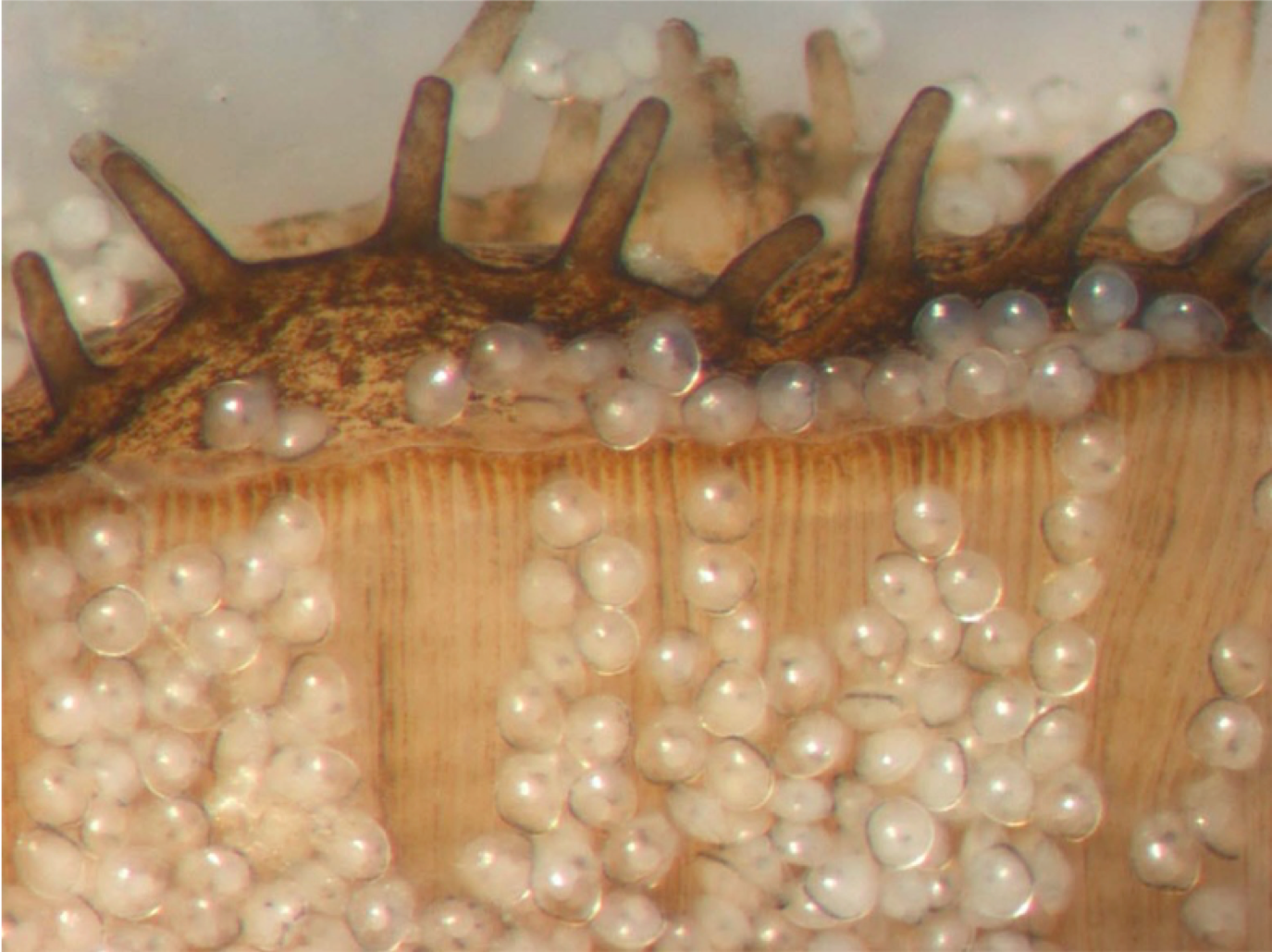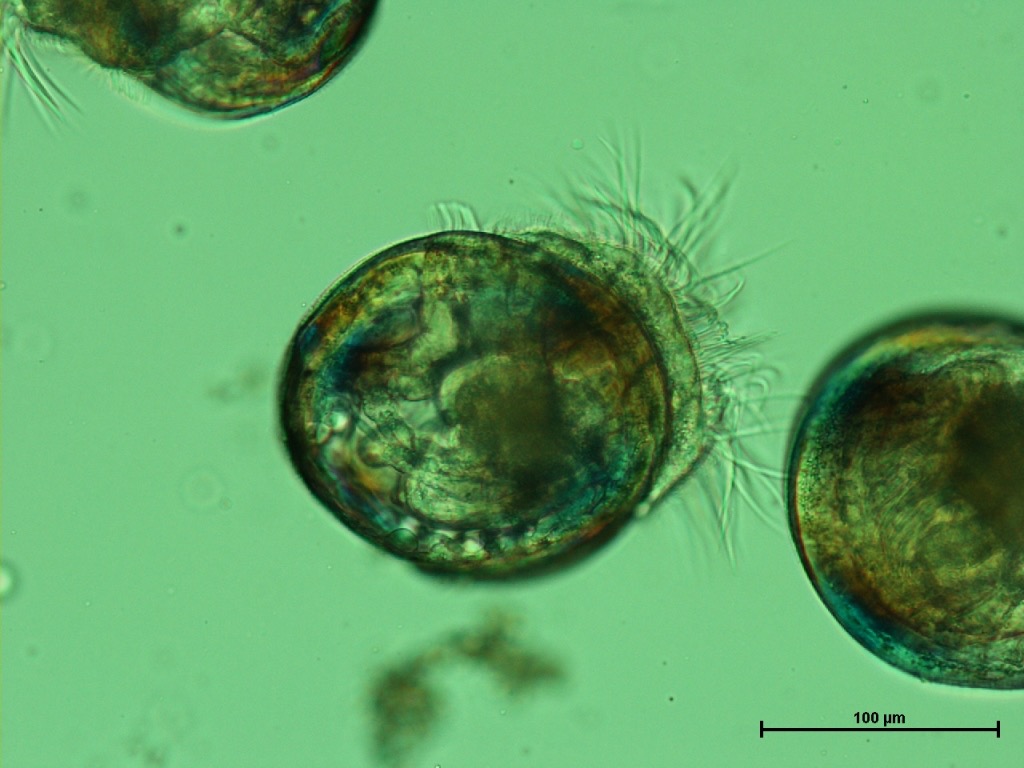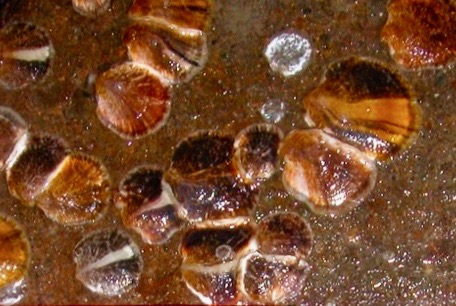
NonCommercial 4.0 International License. To view a copy of this license, visit http://creativecommons.org/
licenses/by-nc/4.0/. Image source: http://www.flickr.com/photos/juliacblum/13316182434/.
Adult oysters are sessile organisms, living attached to hard substrate, but they begin their lives as swimming larvae. Unlike their cousins, the Eastern and Pacific oysters, Olympia oyster larvae are brooded within their mother’s mantle for 7-12 days, before they are released as tiny bivalved larvae into the plankton.


Oyster larvae can feed and swim weakly and may be dispersed by currents and tides. They may settle out of the plankton as quickly as five days or drift for up to four weeks before then attaching to substrate and growing into adult oysters. The process of new oyster settlers becoming part of a population of oysters is called recruitment. These newly settled oysters are also called "spat."

Olympia oysters are sequential hermaphrodites, typically starting out as male, and changing, perhaps twice in a year, to female and then male again. Fertilization is internal, with males releasing sperm and females taking up sperm as part of their filter feeding.

